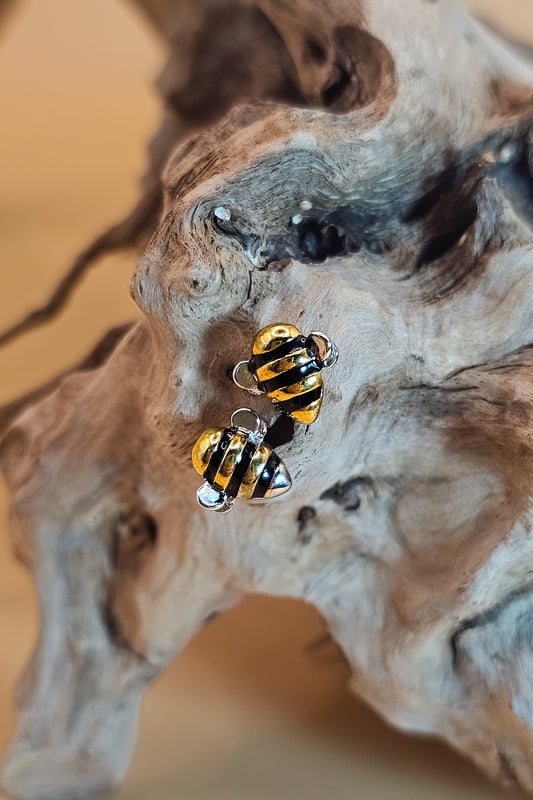Wallace’s giant bee has only been seen twice in the last 170 years and was thought to be extinct until it was recently spotted in a termite nest.
Known as Wallace’s Giant Bee (giant mason bee) (Megachile pluto) (raja ofu/rotu ofu in Indonesian, meaning king/queen of the bees), it was named for the English entomologist, Alfred Russell Wallace, who discovered it in 1858 the first time it was found, while he was visiting the Indonesian island of Bacan.
Wallace described it as a large black wasp-like insect, with immense jaws like a stag-beetle. In fact, it is an Indonesian black resin bee with very well-developed large jaws, and a white band around the abdomen. The female is much larger than the male. She can grow as long as a human thumb, to about 38 mm (1.5 inches) long compared to the male that rarely exceeds 23 mm (0.9 inches) in length. Wallace’s giant bees live in communal nests inside tree-termite nests. She leaves her nest often in search of tree resin and when she finds it, her jaws help her gather it. She forms it into large balls to carry between her jaws, using it to make chambers inside the termite nest she lives in.
This 1:34-minute long video shows just how large the bee is compared to a European honeybee:
It has only been recorded by scientists three times ever, and all three times were on the three islands of the North Moluccas—Bacan, Tidore and Halmahera. The next and last time it was seen before this latest discovery was in 1981, when entomologist Adam C. Messer found six nests on Bacan and other islands. Several expeditions were launched over the years, trying to find it again but it wasn’t to be found.
It would be 37 years before it would be seen again in the wild. In 2018 two specimens of this rare and vulnerable species were found on Bacan and Halmahera in Indonesia and sold on eBay.
In January 2019, an international team of researchers from universities in Canada, the USA and Australia found this photographed Wallace Giant Bee in the North Moluccas, living in a termite nest hanging from a tree approximately 2.5 meters (7-8 ft) off the ground.
The giant female insect was photographed by Clay Bolt, a US bee specialist and conservation photographer. He referred to the insect as a “flying bulldog”. He was very moved by the size and beauty of the bee in real life, and the thrumming sound of its giant wings as it flew past his head.
A lot must be said for this bee’s amazing ability to remain hidden for so long, almost invisible, especially given its size. The Wallace Bee has a wingspan of over 6-centimeters and is one of the largest bees of any species in the world.
Bolt dreams of using this rediscovery to turn the Wallace Giant Bee into a conservationist symbol for raising consciousness about the fragility of this species and others that cling to survival in these remote parts of Indonesia.
If you've heard anything more about Wallace's giant bee please share with us over on our Facebook page! :)








